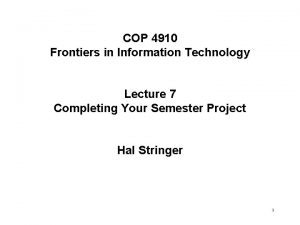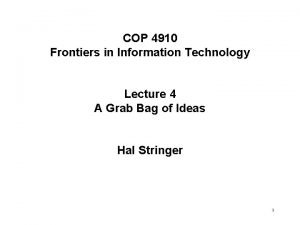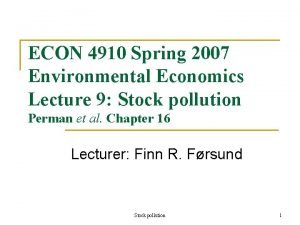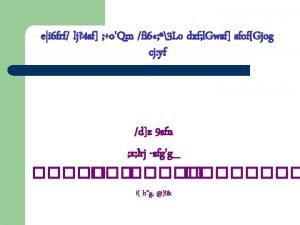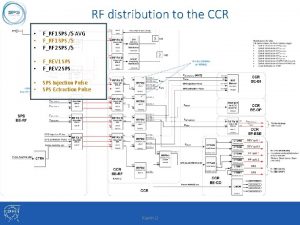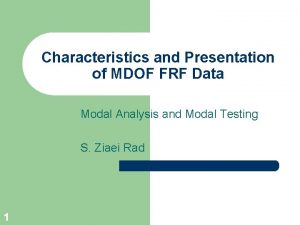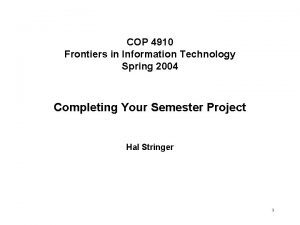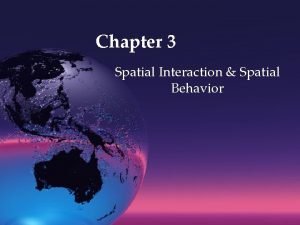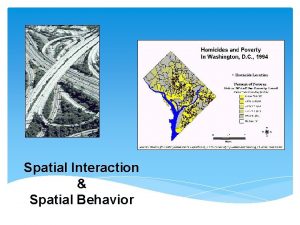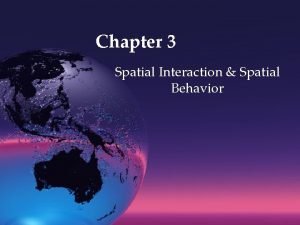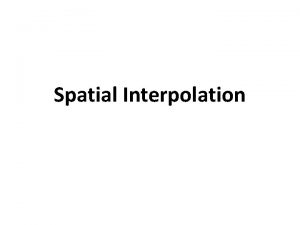Lecture notes 1 4910 spring 2005 FRF Spatial













- Slides: 13

Lecture notes 1, 4910 spring 2005, FRF Spatial environmental models n Spatial configuration Transfer coefficient Source (Point, Mobile, Diffuse) n aij Environmental receptor Key variable: transfer coefficient aij

The Generic model of spatially distributed pollutants n Source abatement cost function n Deposition of pollutants in the environment

Uniformly distributed pollutants n Uniform mix: multiple recipients

Non-uniformly distributed pollutants n Non-uniform mix:

Structured transfer: river pollution n At receptor j: a ranking of transfer coefficients starting upstream at source 1 and ending at nearest source Nj

The spatial social problem n General social problem formulation with damage function

The spatial social problem, cont. n The general first order condition n Non-uniformly mixed: Source marginal abatement cost equal to social marginal damage weighted with transfer coefficients. NB! In general different marginal costs between sources.

Cost effective solutions, cont. n River pollution n Uniformly mixed n Marginal abatement cost equal for all sources and equal to total marginal damage

The pollutant tax solution n Source decision problem n The tax on pollutants is source specific, and should be set equal to the weighted marginal damage in the optimal case. Uniform distribution: tax rate equal for sources n

Ambient standard n Environmental service of receptors n Damage function n The physical ambient standard is the level of deposition of pollutants, dj

Environmental policy in practice n n n Formulating limits for dj; dj* Social problem: The Lagrangian (Economists’ mathematical manual; Kuhn – Tucker, maximisation)

Environmental policy in practice, cont. n First order conditions n Interpretation: Marginal abatement costs equal to shadow prices on ambient constraints weighted with transfer coefficients

Environmental policy in practice, cont. n Interpretation of shadow price q n Envelope theorem Shadow price positive for binding constraints
 Frf for smes vs gaap
Frf for smes vs gaap 01:640:244 lecture notes - lecture 15: plat, idah, farad
01:640:244 lecture notes - lecture 15: plat, idah, farad Cop 4910
Cop 4910 Cop 4910
Cop 4910 Spatial data vs non spatial data
Spatial data vs non spatial data Spring, summer, fall, winter... and spring cast
Spring, summer, fall, winter... and spring cast Fall is what months
Fall is what months Power system dynamics and stability lecture notes
Power system dynamics and stability lecture notes Shape memory alloys lecture notes
Shape memory alloys lecture notes Project cost management lecture notes
Project cost management lecture notes Ppt index
Ppt index Project procurement management lecture notes
Project procurement management lecture notes Project planning and management lecture notes ppt
Project planning and management lecture notes ppt Land use planning '' lecture notes
Land use planning '' lecture notes


